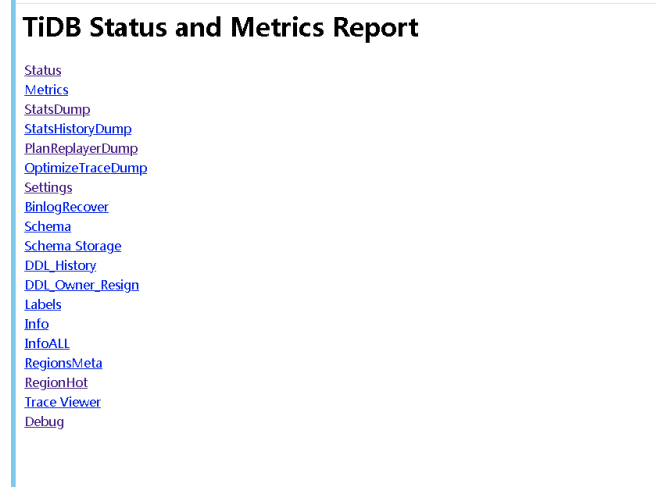Note:
This topic has been translated from a Chinese forum by GPT and might contain errors.
Original topic: 发现10080端口存在目录遍历漏洞,可获取敏感信息
[TiDB Usage Environment] Production Environment
[TiDB Version] v6.1.2
[Encountered Problem: Phenomenon and Impact]
Security vulnerability scan found that the default status_port 10080 of TiDB has a directory traversal issue, with a high-security level.

How can this problem be resolved? I’ve been looking for a long time but couldn’t find any access permission settings.
Are there no firewall or other restrictions on the internal machines?
No, it’s closed. The preferred solution is to handle it within TiDB.
Note to test this, this feature is not enabled that often.
Is this the simplest solution?
So it depends on how you define security vulnerabilities. Port restrictions are at the network layer, so it can be said that the network has security vulnerabilities, not an issue with TiDB.
Shouldn’t this be transmitted with encryption?
This is a feature, not a bug.
A vulnerability is a vulnerability; there shouldn’t be an interface that can access arbitrary files.
Where does it say that any file can be accessed?
I guess this port is used to read TiDB logs and slow query logs.
Directory Traversal Vulnerability Definition
Directory traversal (also known as file path traversal, directory climbing, path traversal, or path climbing) is a security vulnerability that allows attackers to read arbitrary files on the application server without authorization. This includes application code, data, credentials, and sensitive operating system files. In some cases, attackers may also be able to write arbitrary files on the server, alter application data, or even take full control of the server.
Is the scan result of this terminal tool considering it a directory traversal vulnerability just because it found the directory structure under this port, or has it already accessed the files on the host through this port?
Missed scans are generally unreliable; they often report vulnerabilities just by seeing the software version number of an HTTP website without actually attempting a vulnerability attack. However, if there are vulnerabilities, they need to be addressed according to compliance requirements, which can be quite troublesome.
